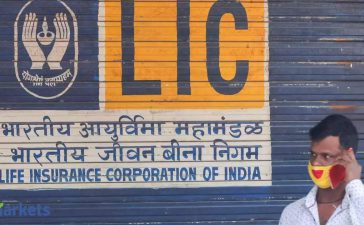

The Washington State Transportation Commission met in Edmonds for the second day last week – part of its effort to learn more about regional and local transportation issues and challenges. Read a summary of the first day here
Port of Edmonds Executive Director Angela Harris reviewed the three phases of reconstruction of the North Portwalk and seawall. The aim is to provide more public access to port facilities and to repair structural damage to the seawall, bulkhead and the portwalk’s wooden pillars.


The project’s first phase is the relocation of the Port Administration and Maintenance Operations building, which is already complete. A ribbon cutting for the new building is scheduled for 11 a.m. April 26 at the new building on 471 Admiral Way.
Harris said that the waterfront lot where the former port administration building is now located will be repurposed for “community and public benefit,” including a public plaza for educational and music programming. The new building has public charging stations and solar panels on the roof.
“We have a small staff but we have great skills, so with the additional (Port administration building) space, we’ll be able to do more in-house work and turn things around a little faster,” Harris said.


Phase 2 is the removal of the old administration building and completion of infrastructure upgrades to support electrification for docked boats. “That is in progress as far as permitting, and we’re seeking funding for this part of the project,” Harris said.
Phase 3 is the repair of the marina seawall and replacement of the portwalk surface to provide flood protection and resiliency. Harris said that this phase is about 90% designed and the port is also seeking funding for this project, estimated to cost $24 million.


The port’s annual revenue is about $13 million, Harris said.
“The seawall does not have a long life expectancy at this point,” she said, adding that the seawall may have up to five years left. “This is our top priority.”
City of Edmonds economic development


In a nod to Edmonds being a state-certified Creative District, Edmonds Director of Community Services and Economic Development Todd Tatum talked about Edmonds’ creative economy, which is fueled by small businesses or gig workers who also have full-time jobs. These gigs range from copywriting to producing music or podcasts.
“That does a number of things,” Tatum said. “It produces a center of mass where folks land here at Edmonds and reach out to this creative network that will bolster their businesses. We’re also a hub for entrepreneurship. When you walk or drive around here, you’ll see a number of businesses that you’ve never heard of before because they’re not franchises. This is the heartbeat of Edmonds.”
Related to accommodating those who live here now and in the future, Tatum covered the three House Bills that Edmonds and other cities must comply with as part of their 2024 Comprehensive Plan updates:
HB 1110: Increase middle housing in areas traditionally dedicated to single-family detached housing.
HB 1220: Accommodate affordable housing to all economic segments of the population of Washington state. Cities must also promote a variety of housing types and differentiate these housing types to affordability levels.
HB 1337: Permit up to two accessory-dwelling units in all single-family zoning districts.
As part of its Comprehensive Plan. update, the City of Edmonds is looking into developing neighborhood centers and hubs, which will affect transportation access. Tatum presented two growth patterns, including a “focused” growth option (Alternative A) and “distributed” growth option (Alternative B). (Details to the alternatives and updates are here.)
“We are a kind of a regional hub,” Tatum said. “Folks come here for recreation, shopping, the waterfront and the ferry to explore the Olympic Peninsula. So getting people from west to east is super critical.”
Looking forward, Tatum said that the City of Edmonds will be doing a community survey, similar to the one that Shoreline did in 2022. He reported that in Shoreline’s survey, 53% of the 800 respondents were hybrid workers while 26% were fully remote workers.
“Edmonds has the ability to bring in knowledge workers,” Tatum said. “They’re lured here for the quality of life, which includes access to transit. We’ve been focused on vehicle-based transit for a very long time – for decades and decades.” And this change with the light rail ride here – the ability to work from home and hybrid – is an opportunity for all of us to come together and find out the best way we can invest into this infrastructure.”
Paine Field growth and development


Paine Field Airport Deputy Director Dawson Frank presented a forecast for the number of passengers who will be using Paine Field Airport. In 2019, the airport serviced more than 1.02 million passengers, and by 2040, 4.32 million passengers are expected.
Frank said that forecasting for Paine Field is done using planning activity levels (PALs) rather than by year.
The Paine Field Airport Commission had examined the numbers of passengers and estimated a 35% increase in annual operations from 138,000 aircraft landings in 2019 to 187,000 landings in 2040.
Frank said that the forecasting for Paine Field is done using planning activity levels (PALs) rather than by year. When the airport hits the 1.5 million passenger mark, PAL 2 will start, which includes the expansion of the terminal, landside and support and cargo areas. Most of the terminal expansion will take place in the northwest part of the airport, which is currently a grassy lot. The runways will undergo a major maintenance during this phase.
Frank reported that the cost of the expansion will total about $313 million from 2022 to 2040. Because the Paine Field terminal is privately owned, $24.9 million of that amount will be funded by a third party while the remainder is funded by the Federal Aviation Administration and the Passenger Facility Charge program.
“Paine Field has a larger economic impact than Sea-Tac (International Airport),” said Paine Field Airport Deputy Director Pete McGuire. “Sea-Tac may have a couple more employees working at the airport, but we still have about 46,000 jobs created. That’s 30,000 people at Boeing, thousands more at office parks and a thousand at [Airport Terminal Service] doing maintenance work. The terminal itself creates 660 jobs and $96 million in economic impact.”
All these airport-related activities generate some revenue for local and state taxes, he added. Snohomish County and nearby municipalities collected more than $12 million in airport-related taxes while Washington state had collected nearly $264 million.
Another major project that Paine Field is working on is research and development of sustainable aviation fuel (SAF) in collaboration with the Washington State University and Snohomish County.
SAF is made from non-petroleum feedstocks, such as corn grains, oil seeds, algae – anything that has carbon in it. It has similar properties to conventional jet fuel but has a smaller carbon footprint. The objective is to make SAF cleaner and produced on a larger scale.
McGuire said that there are very few companies that are making SAF. “If a company goes out of business [while they are making sustainable aviation fuel]), do we know what they make?” he said. “And how can you adjust recipes? Can you make something burn cleaner if you add a little bit of hydrogen to it? So the concept of our research and development facility will be a repository or a library of fuels that can be tested, that they can take large samples from a supplier, distribute them to other universities and expand on the research.”
Paine Field plans to build an 8-acre SAF research and repository facility at the airfield’s southwest corner. The Washington State Legislature has allocated $6.5 million for the research center in the 2023–2025 Move Ahead Washington budget. Snohomish County and Washington State University have already applied for a FAA grant for facility construction.
Tribal transportation challenges


Tulalip Tribe Director of Treaty Rights and Government Affairs Ryan Miller and Treaty Rights Manager Andrew Gobin also attended the meeting. They covered the history of the treaty rights in transportation and tribal sovereignty, referencing the three sovereignties that the U.S. Congress recognizes (federal, state, tribal) and the Treaty of Point Elliott of 1855.
“One of the straining points between state and tribal and federal transportations is jurisdictional questions,” Miller said. “We’re going through that with Snohomish County right now. They have right of way on roads on the reservations that are recorded with the county but not recorded with the BIA [Bureau of Indian Affairs]…Those kinds of jurisdictional issues are incredibly complex.”
Miller and Gobin also told the commissioners that there should be Indigenous American representation on the Washington State of Transportation Commission.
“Having a seat at the table isn’t just about public interest,” Gobin said. “We have real, legally defined and legally protected authority to act and exercise our sovereignty in specified geographic areas. We need to be here…I see a lot of representations of various local governments around the state, and I don’t see any name tags for tribes.”
The Washington State Transportation Commission will meet again on May 15 and 16 virtually.












